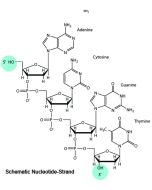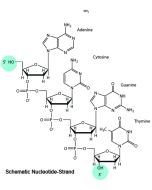Cookie Policy: This site uses cookies to improve your experience. You can find out more about our use of cookies in our Privacy Policy. By continuing to browse this site you agree to our use of cookies.
Innaxon
TLR7-iODN (inhibitory ODN) Endotoxin-free (sterile)

| Product Details | |
|---|---|
| Synonyms | Inhibitory ODN (iODN): Class I/III, ODN immunoregulatory sequence 661 (IRS661) |
| Product Type | Chemical |
| Properties | |
| MW | 6,761g/mol |
| Sequence |
5’-tgcttgcaagcttgcaagca-3’ (lower case letters: phosphorothioate linkage: nuclease resistant) |
| Reconstitution | Dissolve total vial content in sterile endotoxin-free water or PBS. |
| Formulation | Lyophilized. Sterile. |
| Biological Activity |
iODN for in vivo use in rodents (50-150μg per injection). |
| Endotoxin Content | <0.002EU/μg |
| Declaration | Manufactured by Innaxon. |
| Other Product Data |
Contains: 100μg size includes 1.5ml ddWater Endotoxin-free (sterile) (Cat. No.: IAX-900-002-LD15). 1mg size includes 10ml ddWater Endotoxin-free (sterile) (Cat. No.: IAX-900-002-L010). |
| Shipping and Handling | |
| Shipping | AMBIENT |
| Short Term Storage | +4°C |
| Long Term Storage | +4°C |
| Handling Advice |
Avoid freeze/thaw cycles. Keep sterile. After reconstitution, prepare aliquots and keep aqueous stock solutions for 1 day at 4°C or store at -20°C (shelf-life 6 months). |
| Use/Stability | Stable for at least 2 years after receipt when stored at +4°C. |
| Documents | |
| MSDS |
 Download PDF Download PDF |
| Product Specification Sheet | |
| Datasheet |
 Download PDF Download PDF |
In recent years several groups have studied the sequence requirements, specificity, signaling pathways and kinetics of the TLR (Toll-like receptor) 9 suppression by inhibitory oligonucleotide motifs, which led to a class of novel inhibitory oligonucleotide (iODNs), that is independent of the previously thought species preference. Subsequently it has been discovered that telomeric DNA repeats (TTAGGG)n can block immune activation by CpG-ODNs. Short, 11-15 base long oligonucleotides were synthesized that were capable of potently inhibiting CpG-stimulation. The optimal inhibitory DNA motif consists of a pyrimidine-rich triplet, preferably CCT, which is positioned 5- to the GGG sequence in a singlestranded DNA molecule. Additionally, both the optimal spacing between the CCT and GGG motifs, as well as their relative order to each other, is of crucial importance for the inhibitory DNA action. Interestingly, although both TLR7/TLR8 ligands and bacterial DNA share the endosomal compartment for receptor binding and signal transduction, certain iODNs (G-type) suppress only TLR9-mediated activation, whereas prototype class I iODN may also interfere with the activation via the TLR7/TLR8 pathway. Recently, intriguing evidence has been presented that for some iODN classes the immuno-modulatory biological activity shows only limited sequence dependency or may not even involve TLR-mediated uptake and signaling pathways. For example iODNs of the class II are thought to act on immune activation through inhibition of STAT signaling and independent of TLR signaling via binding to a yet to be identified 'ODN-receptor'. Slightly modified phosphodiester versions of the most potent inhibitory ODNs were also able to profoundly block the immune activation of macrophages and just recently prove to be valuable tools for in vivo use in experimental animal models of inflammatory and auto-immune diseases. Based upon these recent insights the following classification for iODNs has been suggested:
Class I: G-stretch ODNs: TLR9-specific competitors, some iODNs may also affect TLR7 and TLR8 signaling
Class II: ODNs with telomeric repeats: TLR-independent inhibitors of STAT signaling (cellular uptake via an 'ODN receptor'?)
Class III: Inhibitors of DNA uptake in a sequence independent manner
Class IV: Long phosphorothioate ODNs as direct competitors of TLR9 signaling in a sequence independent manner
- Modulating responsiveness of human TLR7 and 8 to small molecule ligands with T-rich phosphorothiate oligodeoxynucleotides: M.A. Jurk, et al.; Eur. J. Immunol. 36, 1815 (2006)
- Inhibition of Toll-like receptor-7 (TLR-7) or TLR-7 plus TLR-9enuates glomerulonephritis and lung injury in experimental lupus: R.D. Pawar, et al.; J. Am. Soc. Nephrol. 18, 1721 (2007)
- Development of TLR inhibitors for the treatment of autoimmune diseases: F.J. Barrat & R.L. Coffman; Immunol. Rev. 223, 271 (2008) (Review)
- DNA-like class R inhibitory oligonucleotides (INH-ODNs) preferentially block autoantigen-induced B-cell and dendritic cell activation in vitro and autoantibody production in lupus-prone MRL-Fas(lpr/lpr) mice in vivo: P. Lenert, et al.; Arthritis Res. Ther. 11, R79 (2009)
- A TLR7 antagonist restricts interferon-dependent and -independent immunopathology in a mouse model of severe influenza: J.C.F. Rappe, et al.; J. Exp. Med. 218, e20201631 (2021)









